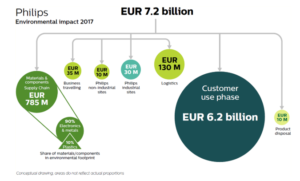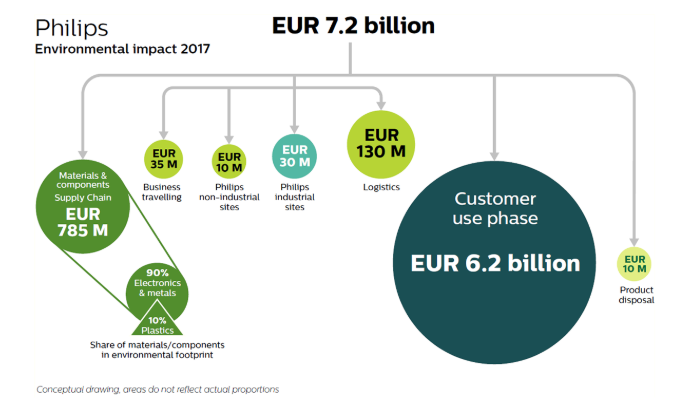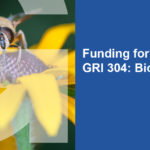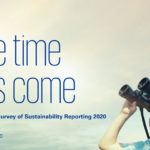
An Environmental Profit & Loss (EP&L) account is an economic valuation in EUR of the impact that a company generates to the environment. Philips published it’s first EP&L in the Annual Report 2017. The Philips EP&L is based on Life-Cycle Assessment (LCA) methodology in which environmental impacts, e.g. climate change or human toxicity, are expressed in monetary terms using environmental prices.
The Environment & Safety consultants from Philips Innovation Services have actively contributed to the EP&L generation of Royal Philips by advising on methodology, providing support in data collection, and processing and guidance to the assurance process.
First of its kind EP&L
Royal Philips EP&L is unique for three reasons:
- It is the first EP&L ever that obtained reasonable (highest level) assurance from an independent auditor, in this case Ernst & Young (EY).
- The methodology used is fully transparent and open source using the readily available LCA methodology ReCiPe and the CE Delft environmental prices.
- The EP&L is generated fully in-house using innovative software from the company EcoChain, allowing full control of a growing, internal environmental intelligence platform, with the potential to involve suppliers.
For more information on Royal Philips EP&L, please refer to the annual report (section 3.3) and the methodology report.
What is the added value of EP&L?
First of all, money talks. Communicating environmental performance in economic language that is well understood in society will help to get the message across.
Furthermore, an EP&L provides insights in the main environmental hotspots of a company’s value chain from an overall business point of view. It can thus support the direction of sustainability programs.
For example:
Society’s transition to a renewable energy system will cause a shift in Philips main environmental impact from the use phase to the supply chain, i.e. the materials that are used in the products.
The electronic components, cables and metals are the main contributors to the environmental impact of the materials used in Philips products.
This is valuable information for Philips Design for Circular Economy and Supplier Sustainability program.
The current EP&L only includes the hidden environmental costs. It does not yet include the (hidden) benefits to society that Philips generates by improving people’s lives through its products and solutions, e.g. the healthcare or healthy food preparation solutions.
It is Philips aim to look into valuating these societal benefits in monetary terms as well and include them in future editions of the Environmental Profit & Loss account.
This information will become increasingly important to convince the growing population of critical stakeholders like investors, consumers, and not to forget talented employees to join a business’ journey towards fulfilling its mission.




